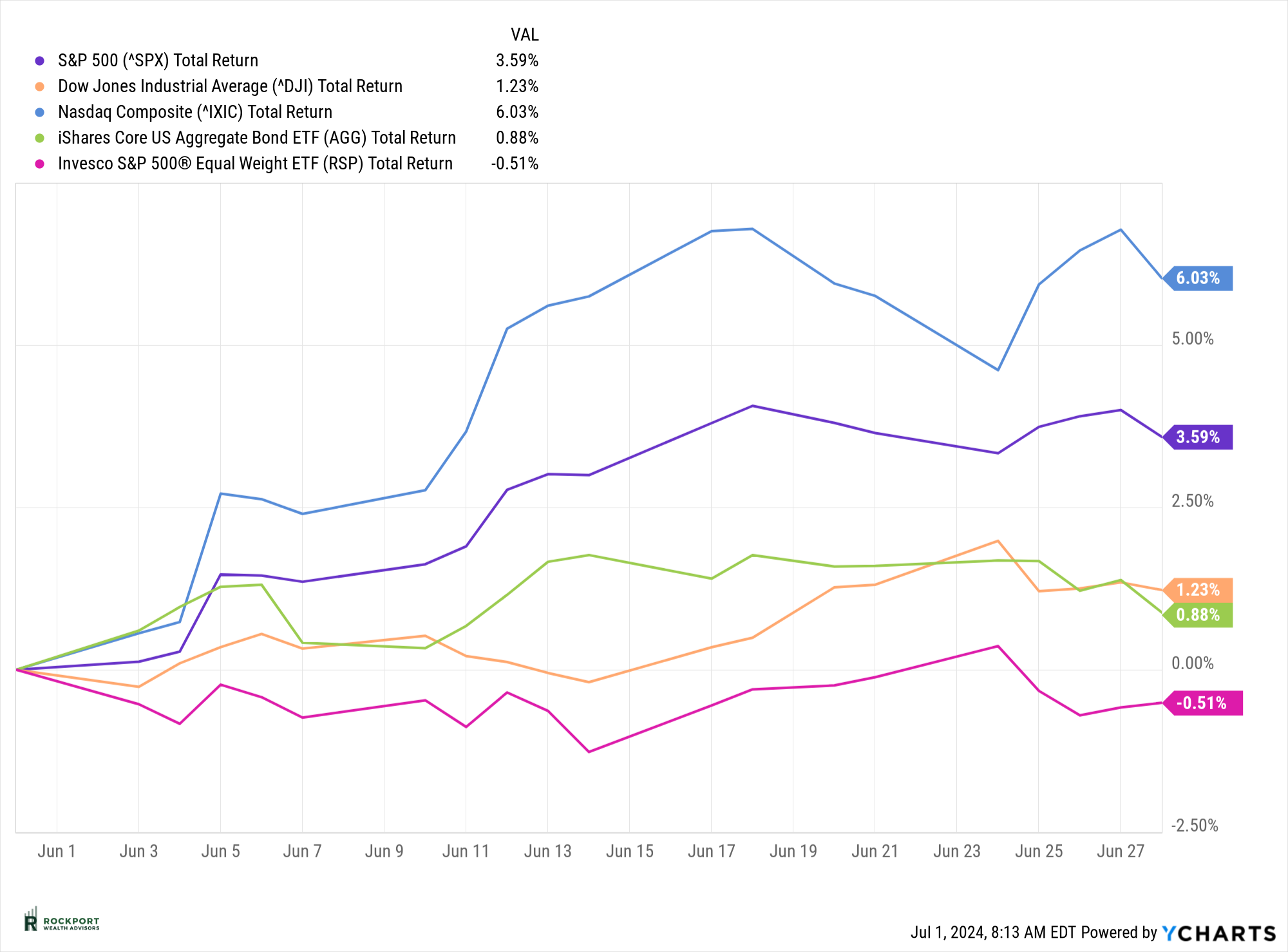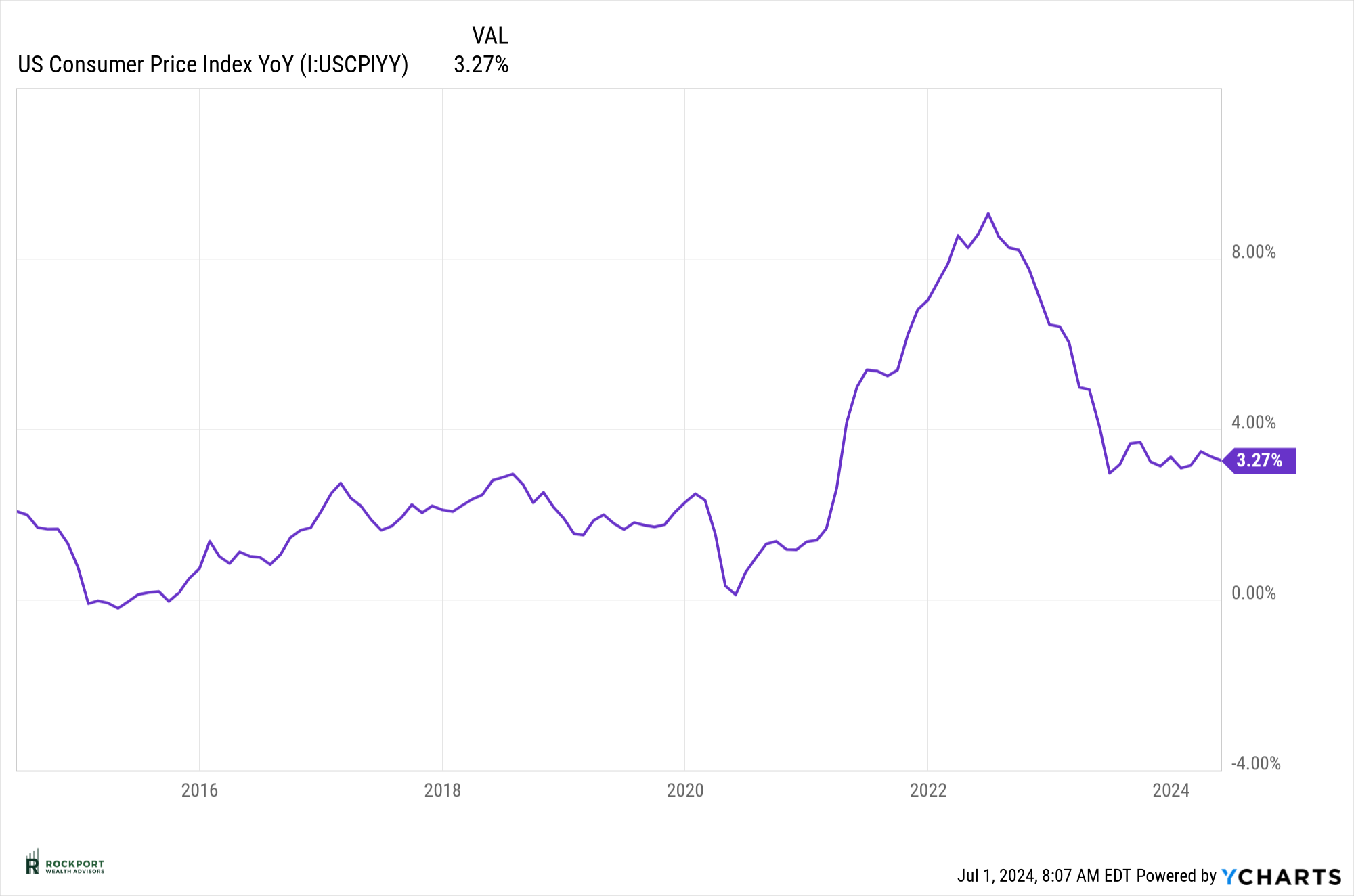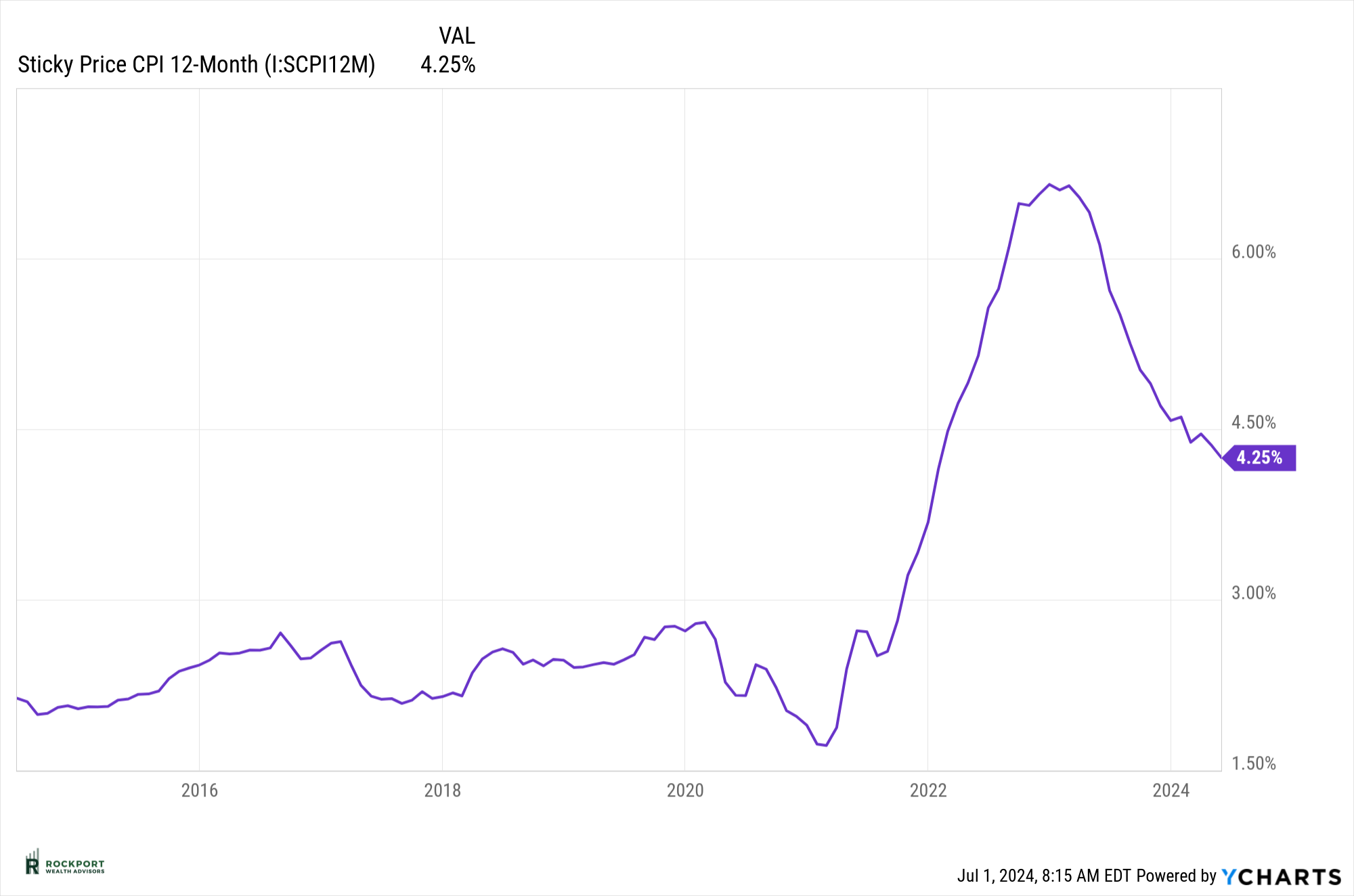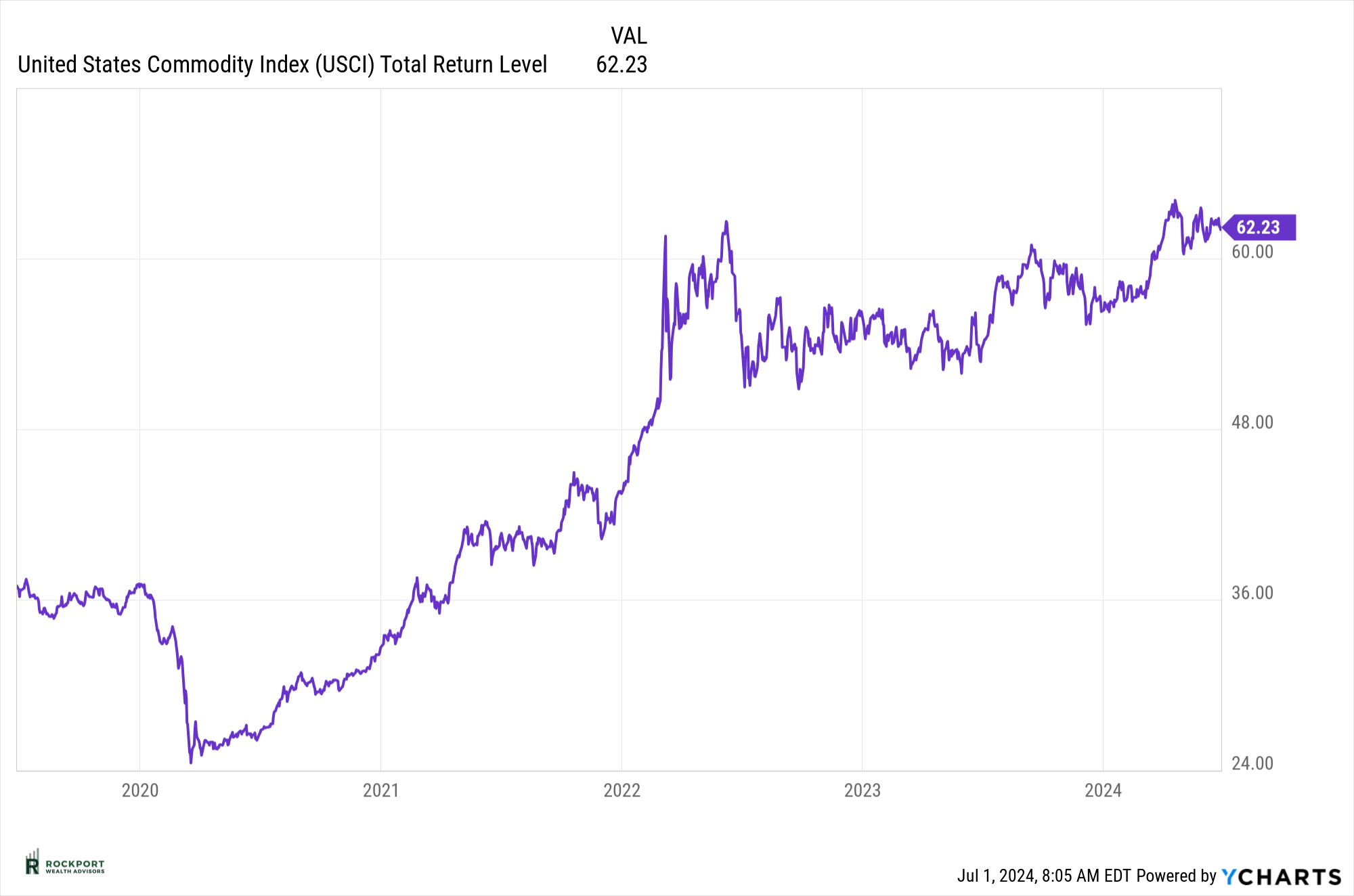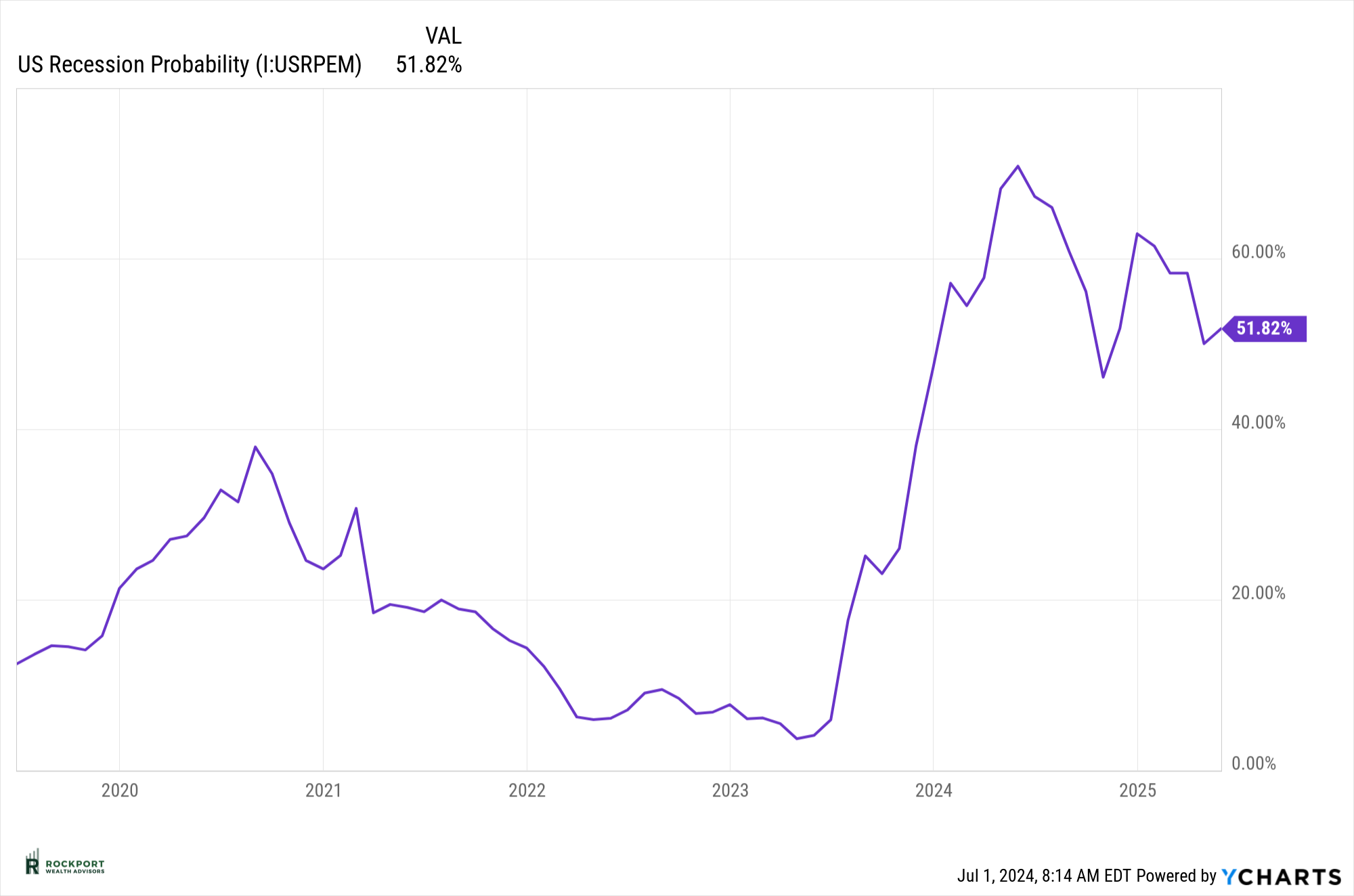Jon Arnold’s ViewpointPreparation That’s the summary of what is on my mind. Preparation for the unknown and potential recession and bear market. I reference football a lot in our letters because it’s identical to managing money. Putting your team in a position to win is what separates the greats from the goods. Knowing when to be conservative on offense, the time clock, plays to run versus certain defensive schemes and what defense to run when you have a big lead to name a few of the similar ideals of managing money. When asked about what makes a difference in terms of winning versus losing when teams are evenly matched, all of the coaching greats including my friend and mentor Jim Tressel always go back to the rule of preparation. The most prepared team almost always wins. In this case know that J Arnold Wealth Management and Rockport Wealth Advisors have a plan. For the first time in my investing career, I am going out of my way to avoid beating the NASDAQ. As you are scratching your head as to why, let me remind you the NASDAQ is the most aggressive large index of the big three. It contains many OTC and high-risk stocks in it and the old saying that risk equals reward always holds true. In this case too much risk in perspective to client’s tolerances is way out of line. A plus 20% year sometimes reverts to a negative 20% decline. I know my clients and I know that they could not handle going from up 20% to down 20% on the falling knife of a high-risk portfolio. Currently from January 1 to now, the J Arnold Growth portfolio is between 8-9%. In addition to this the money market has been yielding in the 5-5.2% area. Not bad starting the second half of the year. Even better knowing we have been very risk adverse this first half. The real reward will be when the market buckles and we don’t. Hence the preparation. We have contingency plans in case of a bear market. We are prepared at certain technical risk levels to revert to our wealth preservation modes. For a generic overlay of the strategy, it means the portfolios will go to mostly money markets, limited maturing bonds and maybe consumer staples and utilities. This will create a little growth but more importantly yield without much risk. The strategy is set, and we are ready. I have certain technical indicators that we identify to reallocate and when we do see those, know we will pounce. |
|
As I have described before the efficient market theory says the market is supposed to average out about a 8-10% return over a span of time, usually over years. The market started a bull run from the end of October 2023 to now with very little decline. From January to March 30th, the market almost did a 10% return. History and math say a severe decline would need to happen for the market average to equal out. Most recently the Nasdaq went down 6% in 10 trading days. April 11th, 2024, the Nasdaq was 16442 and April 19th, 2024 it was 15,282. Let me break this down into real terms for you, if you invested $100,000 in the Nasdaq April 11th, eight days later your $100,000 would be $94,000. The question I have for you is could anyone of you handle losing 6% in eight days? Judging on past experiences with our clients on normal declines, that answer is a hard no. The good news is that the market came roaring back and is almost to its high in April. This leads me to another eye opener. Most people who don’t watch the market but only their account would think the market over the past month has been doing great. The truth is the market recovered what it lost in April, which is not a gain, but break even. This leads me back to our critical thinking discussion above. |
|
JAWM Policy Items Reminder, we do not discuss personal goals, information or strategy regarding your investment portfolio via email or text. Too risky and non-compliant. If you haven’t yet, I encourage you to make an appointment to at least meet the Rockport team. It’s been very advantageous to everyone that has met them so far. Even if you don’t feel you are a financial planning candidate, they are definitely a great relationship to have in case you can not reach me. Client Only WebinarDefinitely hop on this if you can. We had an amazing response to the last one. Very informative. The next one is July 16th at 10:00am. We will be discussing current market conditions and our overall outlook. We will also be going over Roth Conversions and how they might fit into your plans. Click below to register. In closing, God Bless America and Happy Birthday America. July 4th is my favorite holiday because I love our veterans, I love our country and it’s my anniversary. The team at Rockport Wealth love and support veterans as much as I do and they are hosting their annual Salute to Service Golf Event on August 12th at Red Tail Golf Club in Avon, OH. Click below to participate or learn more about this event. Thank You for your business! Below please find some market analysis from the team at Rockport Wealth Advisors. |
|
Markets & EconomyThe markets continued their steady climb in June, with the S&P 500 gaining 3.59% for the month. This brings its total return for the first half of the year to an impressive 15.29%. It’s remarkable to see the consistency in market performance, driven predominantly by a select few stocks. In fact, just 10 stocks have contributed to over 75% of the index’s gains this year. Once again, the S&P Equal Weight Index underperformed the market cap-weighted index, declining by 0.51% in June. However, it has managed a year-to-date increase of 4.96%. The current market dynamic, heavily influenced by a small number of stocks, raises questions about future corrections. Will only these top performers adjust, or will they impact the broader market? Time will tell. |
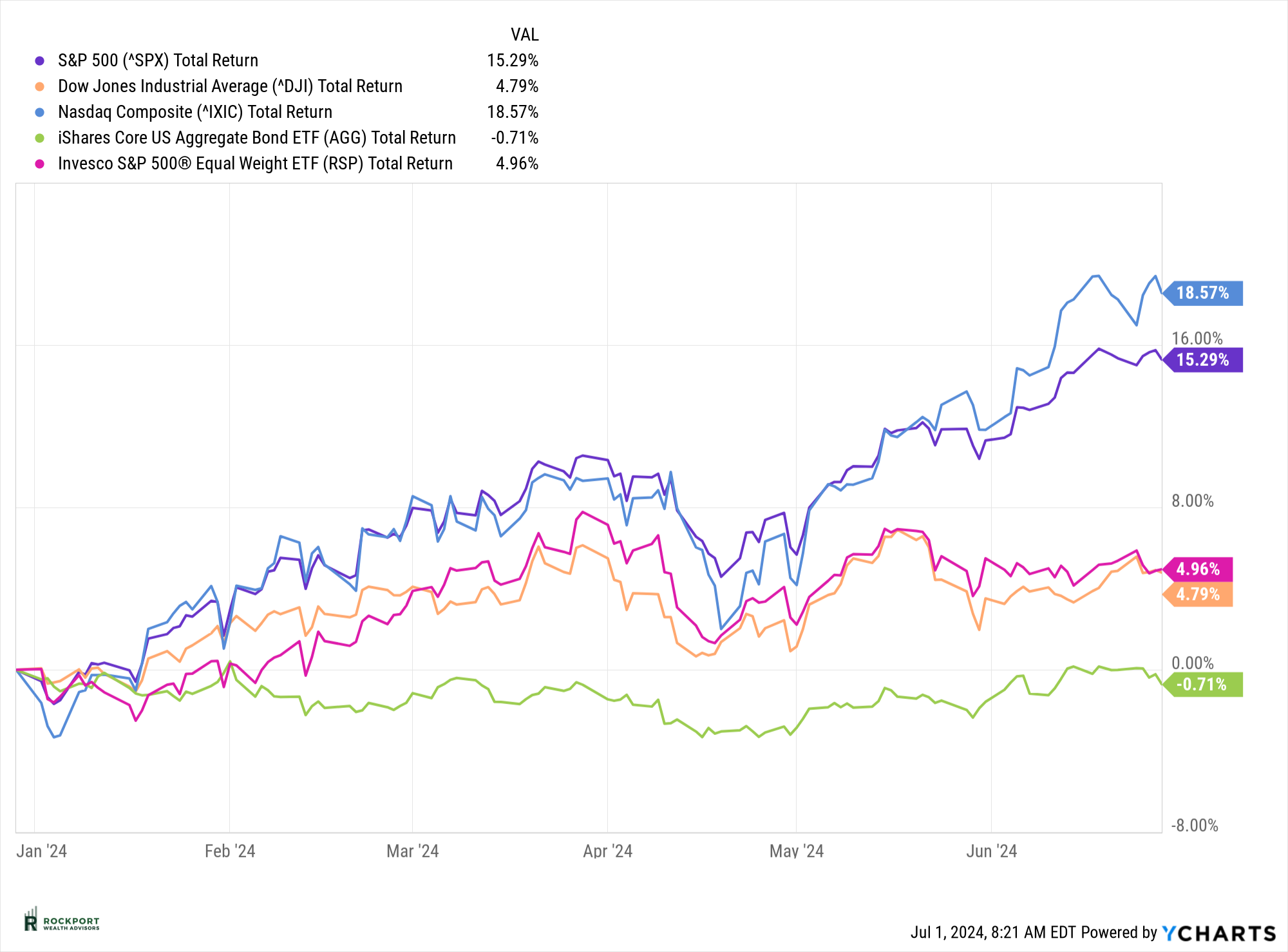 |
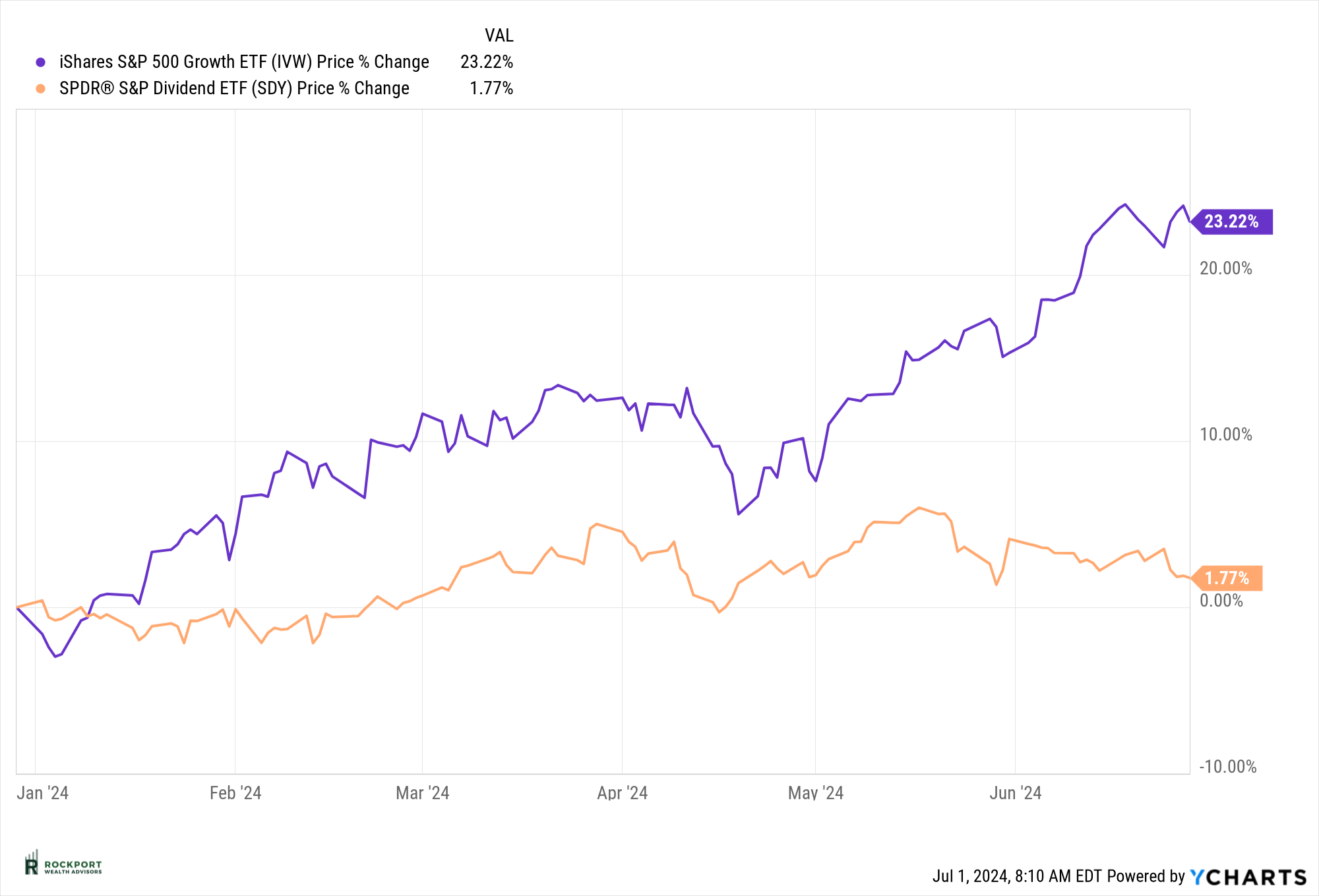 |
Historically, July has been a positive month for the markets.¹ However, as we move past July, we often see a shift in seasonality, with August, September, and October typically underperforming. Last year, this same period saw an 11% decline.Given that this is an election year, we anticipate additional volatility due to the uncertainty surrounding the elections. Markets generally dislike uncertainty, preferring to have a clear understanding of the conditions they are facing. Currently, market psychology is excessively positive. Historically, such behavior is often seen closer to market tops than bottoms. We’re noticing an increase in irrational comments and actions, like investors insisting on putting all their money into a single stock they believe will never decline, or first-time investors moving their safe money into the market based on a hot tip.
Our experience tells us that very few individuals can tolerate significant declines in their investments. Many investors feel confident taking risks during a market upswing, but when the inevitable downturn occurs, panic often sets in, leading them to change strategies or sell at a loss.
At our firm, we focus on achieving returns that align with your financial plan and risk tolerance. While we may not match the gains of a runaway market, we also avoid the steep declines of 20%, 30%, or 40%, which can take a long time to recover from. Our goal is to provide a balanced approach that helps ensure stability and long-term growth.
We believe economic headwinds are continuing to escalate. This past month, Consumer Confidence saw a significant decline, indicating that the previously resilient consumer is becoming more concerned. Additionally, the Consumer Price Index (CPI) has shown no significant improvement since mid-2023. While the CPI is gradually decreasing, it remains elevated. The Federal Reserve still has considerable work ahead to address inflation effectively.

|
On the employment front, continuing claims for unemployment have noticeably increased to their highest level since April 2023. Meanwhile, initial claims for unemployment have seen a slight decrease. We are closely monitoring these trends as additional layoffs continue to be announced. Additionally, the Leading Economic Index hasn’t shown significant improvement, but it is not currently signaling a recession. From the Conference Board : The U.S. LEI fell again in May, driven primarily by a decline in new orders, weak consumer sentiment about future business conditions, and lower building permits,” said Justyna Zabinska-La Monica, Senior Manager, Business Cycle Indicators, at The Conference Board. “While the Index’s six-month growth rate remained firmly negative, the LEI doesn’t currently signal a recession. We project real GDP growth will slow further to under 1 percent (annualized) over Q2 and Q3 2024, as elevated inflation and high interest rates continue to weigh on consumer spending.” |
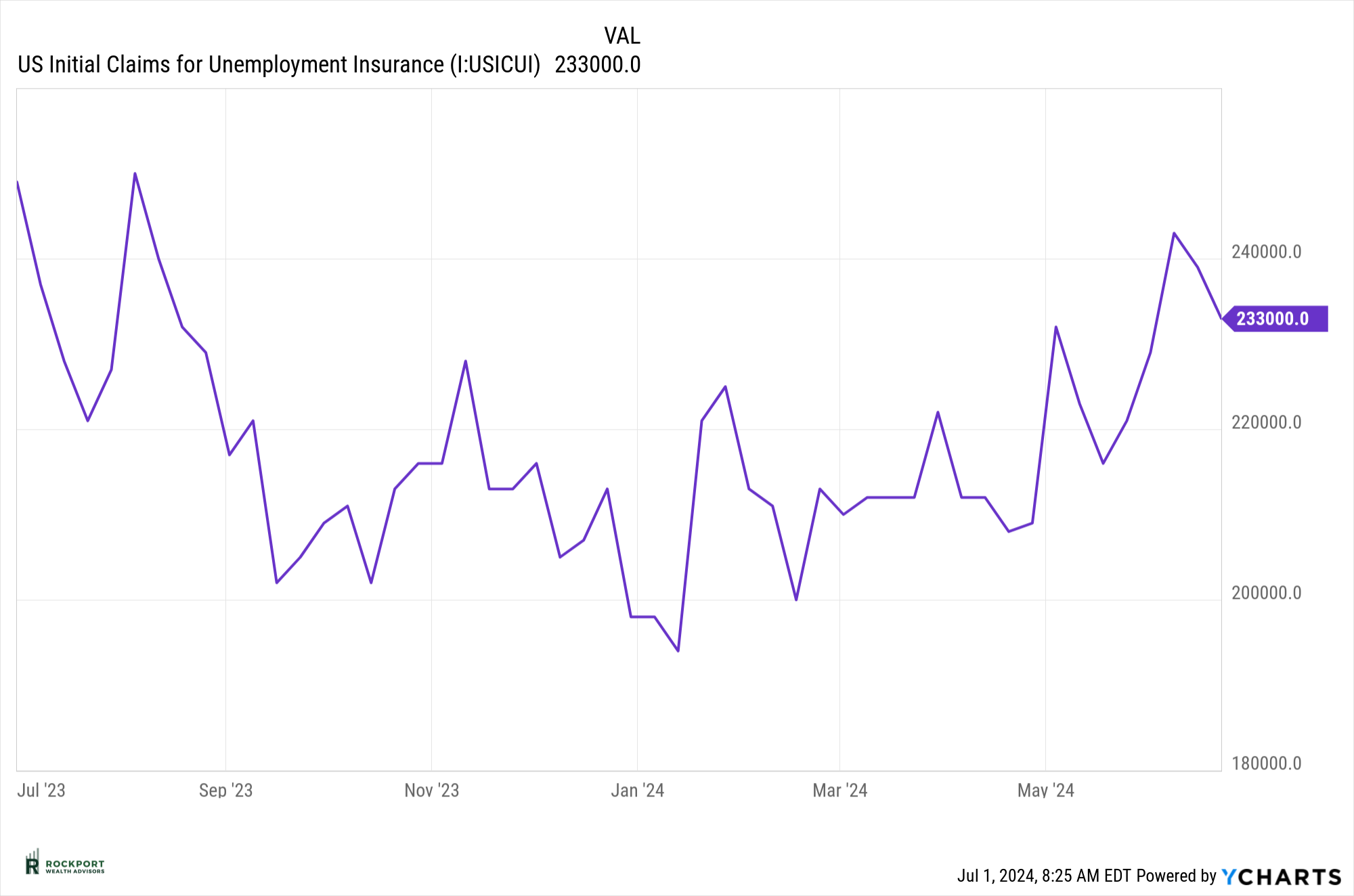
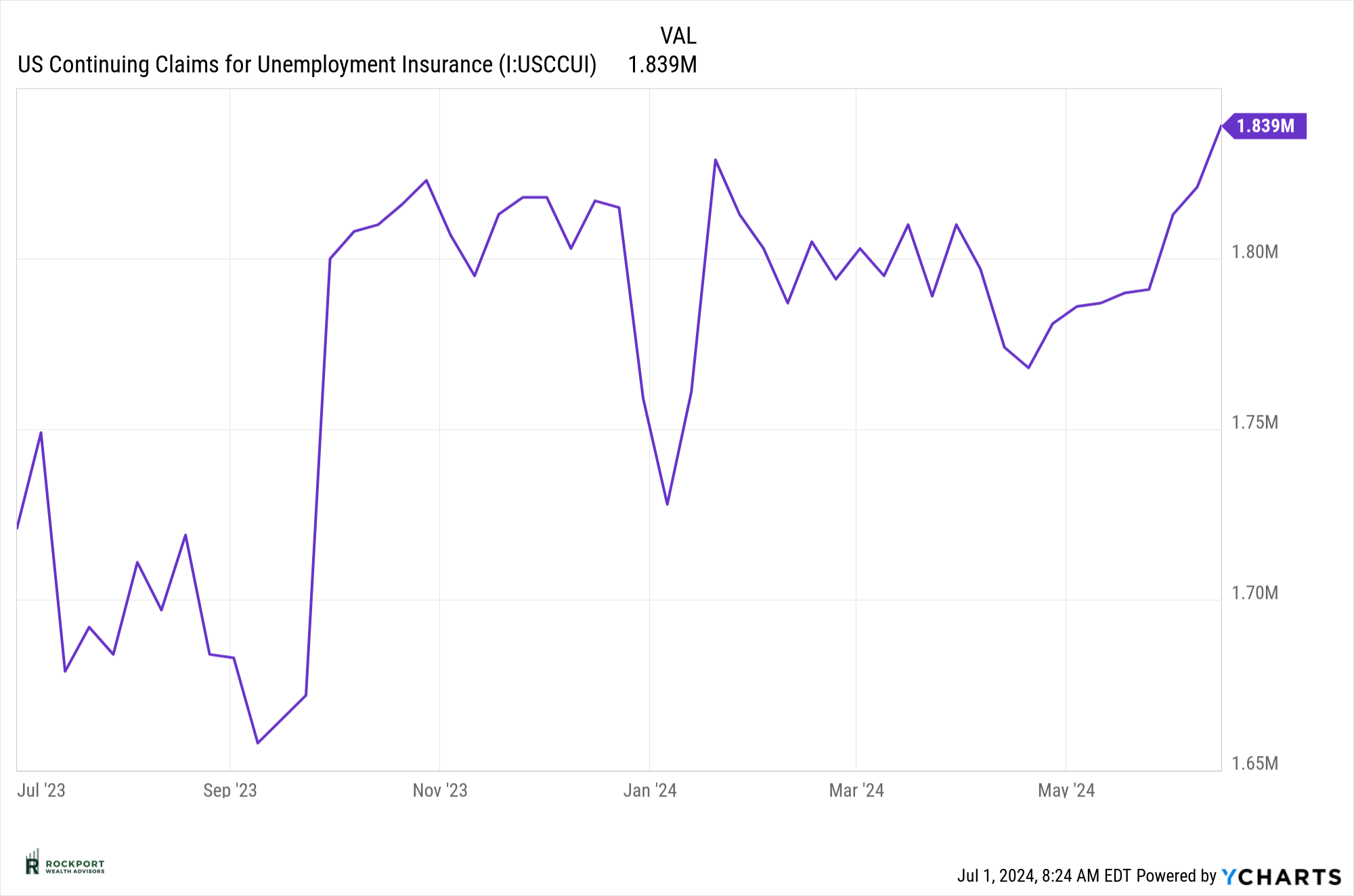
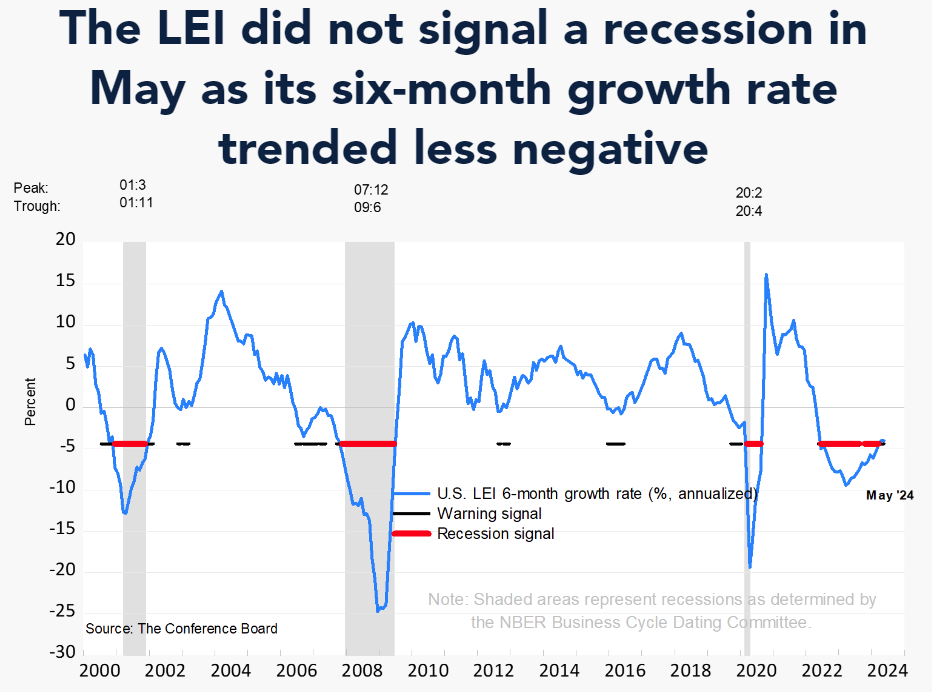 |
Lastly, commodity prices remain elevated, and the yield curve is still inverted at levels similar to a year ago. The probability of a recession remains historically high. This period may be remembered as either the most well-predicted recession or the greatest miss of all time by economic indicators that typically signal recession. Time will tell.
|
|
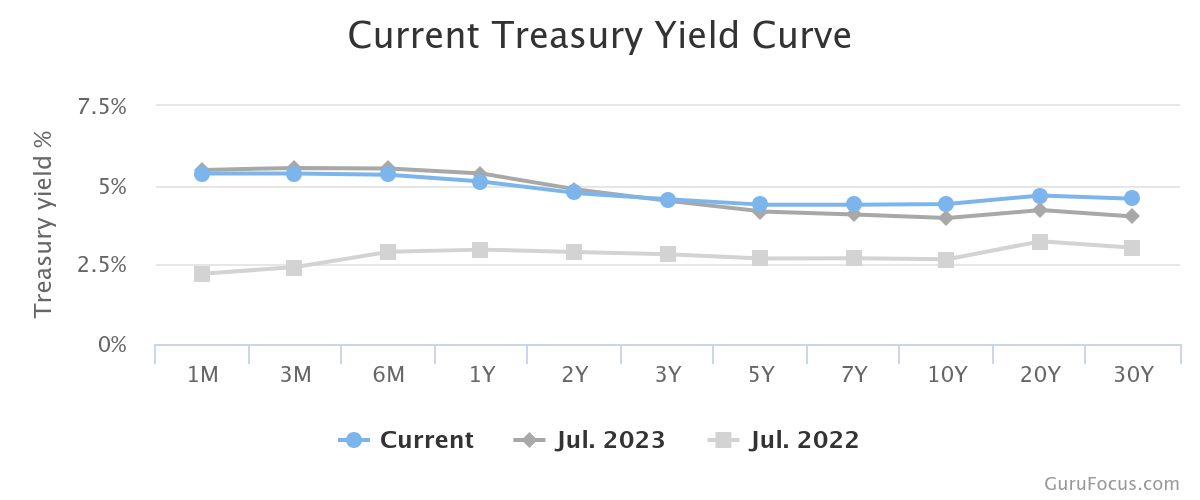
|
Tax Talk 4 WAYS TO REDUCE YOUR RMD TAX BITE Markets continue to climb. That is good news for your retirement account. However, there is a downside. When you contribute to a traditional IRA or a pre-tax 401(k), you make a deal with Uncle Sam. You can get a tax deduction and tax deferral on any earnings in your account. However, eventually the government is going to want its share and will require funds to come out of these accounts. That is when you must start required minimum distributions (RMDs). You may not need the money, and you may not want the tax hit. Bigger retirement account balances can mean larger tax bills. Here are some strategies that can help reduce your RMD tax bite. 1: Do a Qualified Charitable Distribution (QCD) If you are planning on giving money to charity anyway, why not do a Qualified Charitable Distribution (QCD) from your IRA? For 2024, if you are age 70 ½, you may transfer up to $105,000 annually from your IRA to a charity tax-free. The QCD can also satisfy your RMD (if the QCD is made before the RMD is taken), but without the tax hit. QCDs are not available from employer plans. 2: Use the Still-Working Exception Are you still working after age 73? If you do not own more than 5% of the company where you work and the company plan offers a “still working exception,” you may be able to delay taking RMDs from your company plan until April 1 following the year you retire. The still-working exception is not available for IRAs but if your plan allows, you can roll your pre-tax IRA funds to your plan and delay RMDs on these funds too. Just be careful. If you have an RMD for that year from your IRA, you must take it before you can roll over the rest of the funds. 3: Consider a Qualified Longevity Annuity Contract A Qualifying Longevity Annuity Contract (QLAC) is a product designed to help with longevity concerns. Any funds you invest in the QLAC are not included in your balance when it comes to calculating your RMDs until you reach age 85. This will reduce your RMDs. SECURE 2.0 has changed the rules for QLACs by increasing the dollar limit and doing away with restrictions on the percentage of the account limits. The maximum QLAC limit is now $200,000 per person. 4: Convert to a Roth IRA If reducing the taxation of RMDs is a top concern for you, you may want to consider a Roth IRA conversion or an in-plan 401(k) conversion. This is because you are not required to take RMDs from your Roth IRA or Roth 401(k) during your lifetime. Keep in mind you will need to take your 2024 RMD from your traditional IRA prior to converting to a Roth IRA. Also, both Roth IRA conversions and in-plan 401(k) conversions are taxable events. There is a big payoff though. You will never have to worry about the tax bite of an RMD ever again. |
|
As always, if you have any questions on anything we have talked about here or anything else that is on your mind, please feel free to reach out. |

